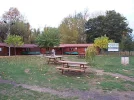sillydoll
Veteran Member
- Time of past OR future Camino
- 2002 CF: 2004 from Paris: 2006 VF: 2007 CF: 2009 Aragones, Ingles, Finisterre: 2011 X 2 on CF: 2013 'Caracoles': 2014 CF and Ingles 'Caracoles":2015 Logrono-Burgos (Hospitalero San Anton): 2016 La Douay to Aosta/San Gimignano to Rome:
Basically, my feelings are that the Camino de Santiago is a 20th century reinvention of a medieval pilgrimage route that we, as post-modern 21st century beings, can never fully understand or experience.
We don't know and will never be able to comprehend what it was like for a medieval pilgrim to journey to Santiago. The church ruled. The people were mostly illiterate and superstitious. For them the world was a very different place - beyond our understanding.
Don Jose Ignacio (of Grañon) wrote that although we as pilgrims find ourselves confronted by the Camino's history as we walk the path, we should not lose sight of the fact that the Jacobean pilgrimage is 'living history'.
It is 2014. We are the new pilgrims on the block. We are writing a new Camino history. Why do we even try to emulate a medieval pilgrim experience? Its not possible. The Camino is a much better and safer place now than it was 800 years ago.
We belong to a motorised age and we don't have to walk hundreds of km in the wind, sun and rain in a foreign country, yet we do. The great majority of us walk for purely unselfish reasons in that we do not expect a reward at the end of it.
In an address to over 100 delegates at the 2001 CSJ Conference on 'Body and Soul, Hospitality on the Road to Compostela' Colin Jones spoke about the gulf of centuries and of culture between us [in the 21st century] and those in the 13th century. He used Burgos as an example.
"800 years ago King Alfonso VIII founded an institution which became known as the Hospital del Rey. Twelve brothers and eight chaplains administered to the needs of the pilgrims who might seek shelter there ... meeting their needs assumed near sacramental significance as if meeting Christ himself. Today, its magnificent building houses a faculty of Law. A few meters away in the adjacent park, the Parral, the local Amigos del Camino erected a series of barrack-like huts to serve as the pilgrim albergue.
While both serve the same ends, the separation of time means that the inspiration behind these two foundations has changed beyond recognition".
I have posted my comments on the last section of the Manifesto here:
http://amawalker.blogspot.com/2015/01/manifesto-villafranca-del-bierzo.html

We don't know and will never be able to comprehend what it was like for a medieval pilgrim to journey to Santiago. The church ruled. The people were mostly illiterate and superstitious. For them the world was a very different place - beyond our understanding.
Don Jose Ignacio (of Grañon) wrote that although we as pilgrims find ourselves confronted by the Camino's history as we walk the path, we should not lose sight of the fact that the Jacobean pilgrimage is 'living history'.
It is 2014. We are the new pilgrims on the block. We are writing a new Camino history. Why do we even try to emulate a medieval pilgrim experience? Its not possible. The Camino is a much better and safer place now than it was 800 years ago.
We belong to a motorised age and we don't have to walk hundreds of km in the wind, sun and rain in a foreign country, yet we do. The great majority of us walk for purely unselfish reasons in that we do not expect a reward at the end of it.
In an address to over 100 delegates at the 2001 CSJ Conference on 'Body and Soul, Hospitality on the Road to Compostela' Colin Jones spoke about the gulf of centuries and of culture between us [in the 21st century] and those in the 13th century. He used Burgos as an example.
"800 years ago King Alfonso VIII founded an institution which became known as the Hospital del Rey. Twelve brothers and eight chaplains administered to the needs of the pilgrims who might seek shelter there ... meeting their needs assumed near sacramental significance as if meeting Christ himself. Today, its magnificent building houses a faculty of Law. A few meters away in the adjacent park, the Parral, the local Amigos del Camino erected a series of barrack-like huts to serve as the pilgrim albergue.
While both serve the same ends, the separation of time means that the inspiration behind these two foundations has changed beyond recognition".
I have posted my comments on the last section of the Manifesto here:
http://amawalker.blogspot.com/2015/01/manifesto-villafranca-del-bierzo.html












